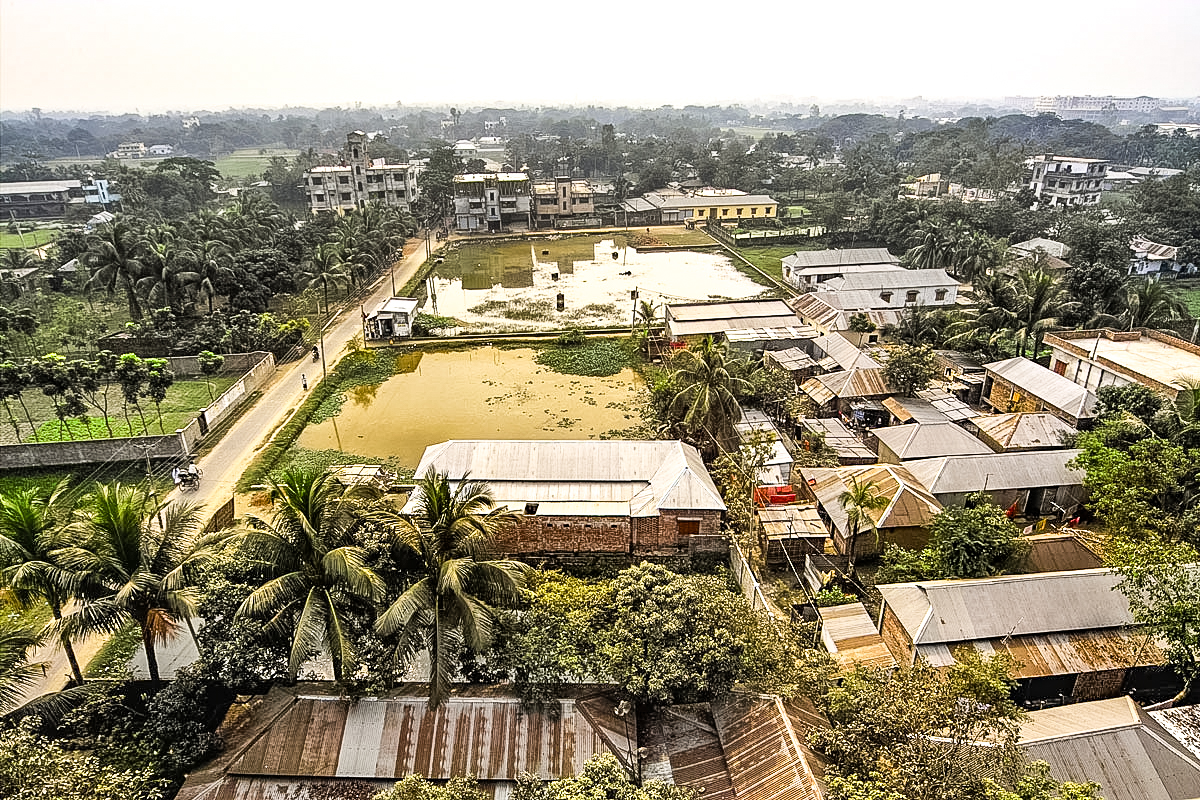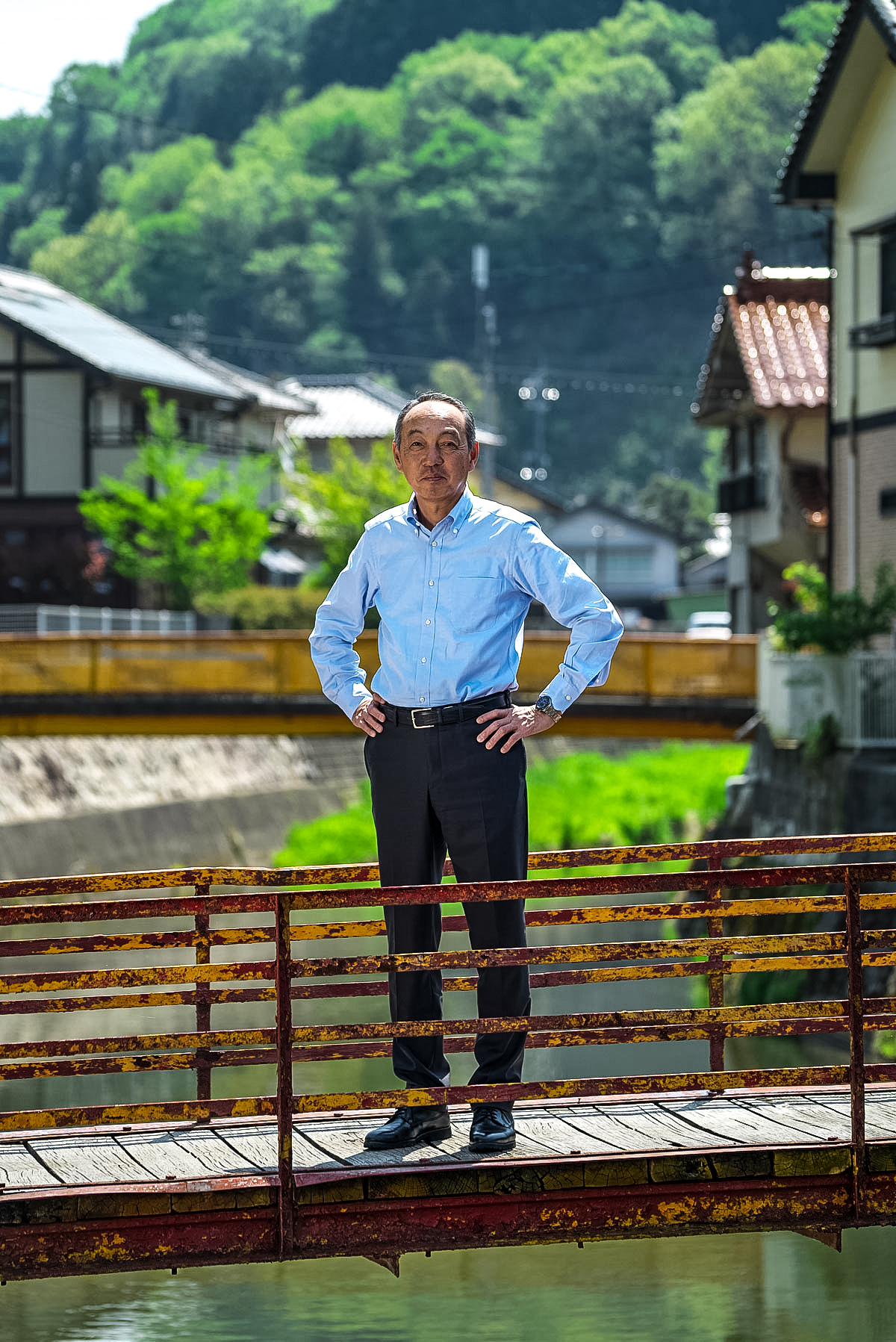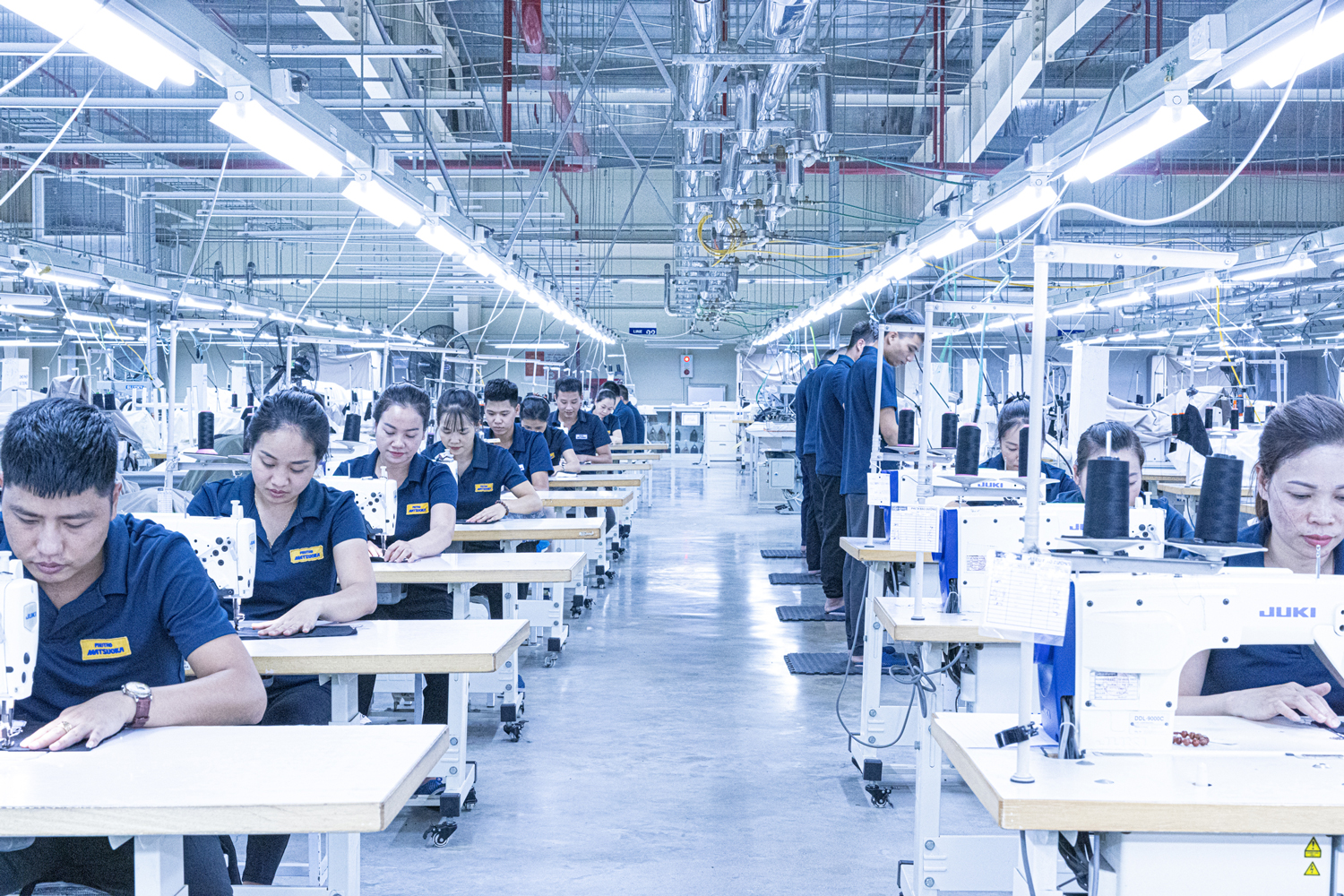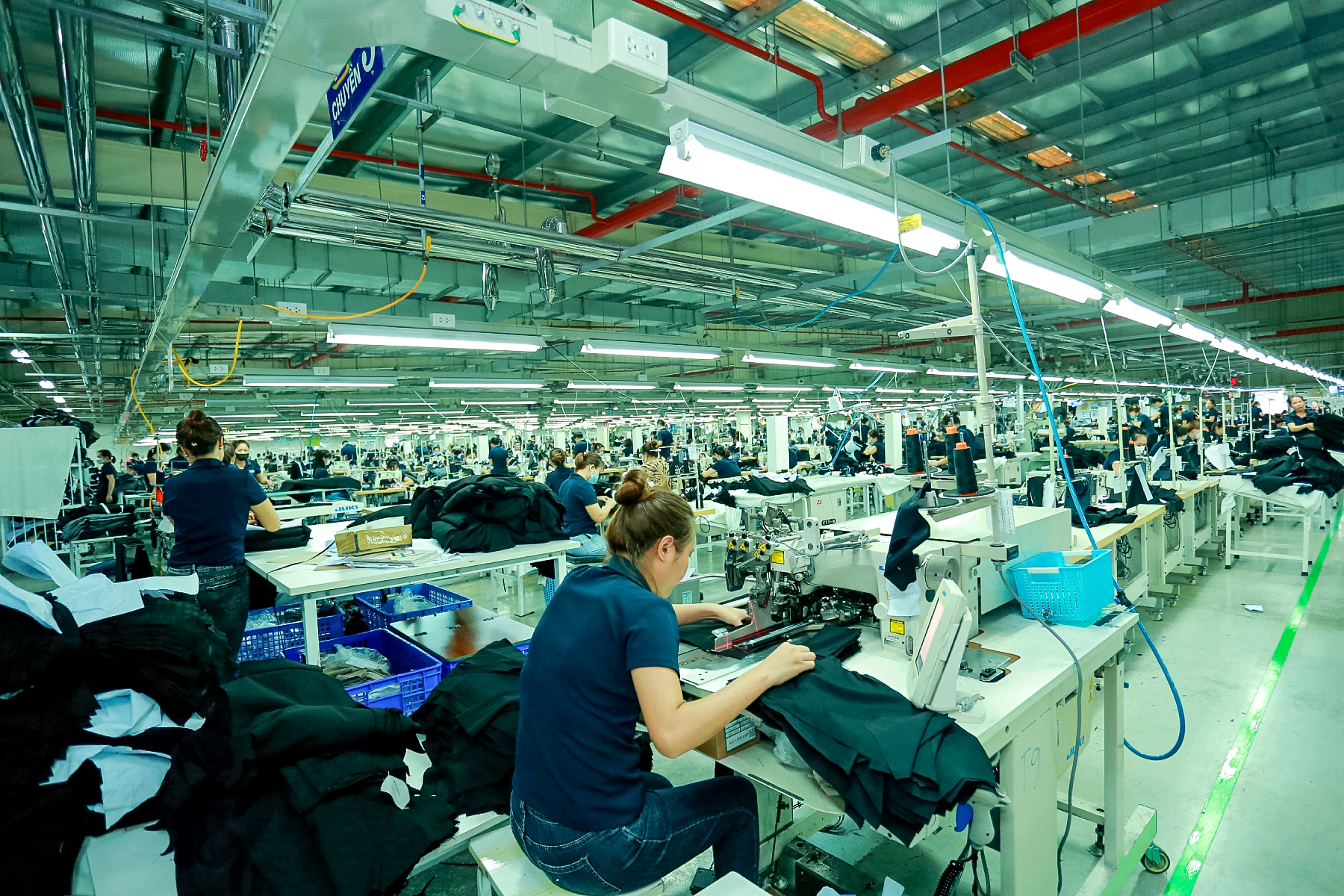FRONTIER SPIRITS

Challenge is MATSUOKA’s DNA
Our history is the history of challenges of making clothes in Japan.
It was in 1982 that MATSUOKA outsourced production overseas for the first time. At that time, in South Korea, thousands of factory workers were seated side by side in orderly rows busily running sewing machines by foot. However, as is common industry knowledge, as economic outlooks improve and advance and employment opportunities grow, human resources engaged in manufacturing tend to decrease. The same will be true with our next production base in China. In this way, we continuously seek for new places that offer manufacturing potential. This has led to growth in scale of now operating 12 factories in five countries: China, Myanmar, Bangladesh, Vietnam, and Indonesia.
Setting up factories from scratch in completely unfamiliar places where we could not understand each other’s language led to hardships and difficulties beyond imagination. Some even resulted in failure. Still, we never gave up until we had achieved our goal, so MATSUOKA’s technology and know-how were born, taking root in local communities and developing human resources. For manufacturing in various countries away from Japan, building relationships with many people are important. Connections beyond national boundaries will continue to become increasingly important in future manufacturing. Above all, the trust earned by creating job opportunities, driving the economy forward, and supporting people’s livelihoods in local communities will continue to become a great asset in the future. In any era, our mission is supported by the motivation to seek new places and to take on new challenges rather than remaining content in one place, especially when things are going well.

Creating jobs is
to create new sceneries.
Let me introduce what happens when we seek to build a factory in a new place. The first thing to think about is “whether it is possible to recruit more than 1,000 factory workers in one factory.” Factory scale is assumed to be the unit of “being capable of shipping a 40-feet container of products, which is approximately 20,000 items, per week.”
It was when we went to the northern part of Vietnam to look for a factory site for the first time in October 2014. At that time, we spent three days driving in a van on an about 600-kilometer road. First, we entered Hanoi, and collected information from JETRO. After that, we drove about 150 kilometers south, and met local government officials and persons in charge of attracting investment for an industrial complex and conducted thorough hearings and exchanges of opinions. Then, we carried out field surveys of a number of candidate sites. At that time, we visited many candidate sites, but we had a hard time finding “the right place,” and I talked about the problem with accompanying staff late into each night while we ate local foods, washing it down with our drinks.
On the final day, while driving back to Hanoi and feeling a little depressed, I recalled what I had heard from the president of JETRO at the beginning of the tour: “The northwestern region, which is not yet attracting much attention, has potential for consideration in the future.” So, we decided to make a hasty visit to Phu Tho about 100 kilometers northwest of Hanoi. We contacted the vice-president of the company managing the factory site, and asked him to take us around the site as we would be there soon. The land was undeveloped such that buffalo still roamed wherever they pleased, and there were no residential areas, factories or shopping districts in sight, and the roads were not yet paved but rough enough to raise a cloud of dust. It was a place where everyone would surely think: “Such untouched land could never turn into a factory site.”
However, as I listened to the vice-president and took in the surroundings, something inside of me clicked. I also had information that an expressway would be constructed nearby in a few years in the back of my mind. After the field survey and immediately after returning to Japan, we gathered together materials, and decided to make an investment. We registered a new company in Hanoi, dispatched staff from Japan, and started preparations to launch the factory. In September 2016, an opening ceremony was held, and at present, more than 2,000 employees are working energetically on approximately 60,000 square meters of land. At the time of the launch, there was only our factory, but now it has become a large industrial complex. As planned, the expressway was constructed, which made it convenient to travel from the airport, allowing cars and people to briskly come and go, and shops to stand side by side on roadsides. Local residents’ lives and the surrounding landscape have changed dramatically.
Pioneers sought for the coming age
For the coming age, new production bases alone are not targets for development and challenges. It is important not only to build production systems that take into consideration the natural environment on a global basis, but also to prepare and create working environments as well as health and welfare benefits that allow employees to work comfortably with a peace of mind for a long time, while also taking into consideration culture that differs from one country to the next and local characteristics. Understanding Japanese manufacturing spirit is important such as building bridges between local communities while ensuring that local people understand Japan’s methods of manufacturing, and creating satisfaction among the people who work there, aiming to improve livelihoods and culture in local communities.
Furthermore, the current market mainly comprises customers in Japan, but there might be places in need around the world. Now, we are mainly engaged in the making of clothes, but there might also be other places in need of overseas base development for manufacturing. While taking advantage of our strengths, we will continue to pioneer and develop markets from various angles. I think there is still much potential for the future in which we can take greater advantage of our supply chains that extend around the world.





